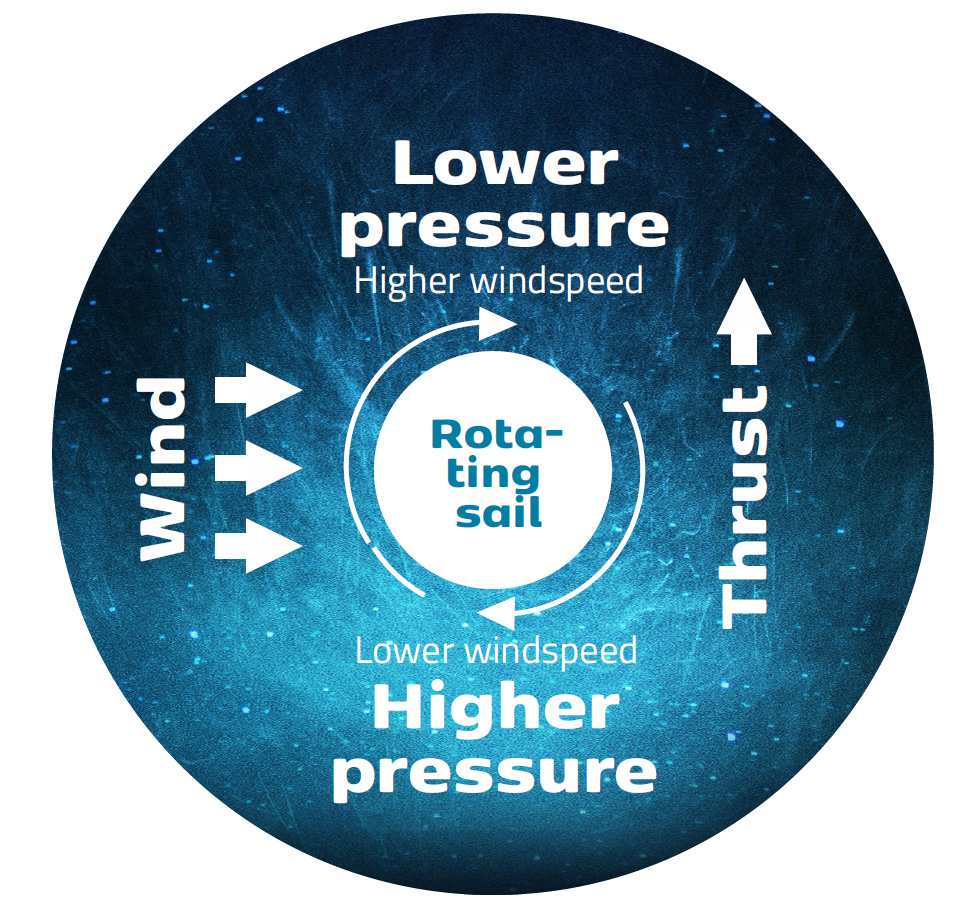Norsepower Rotor Sail™: 38 installed, 46 more ordered
Norsepower Rotor Sail™ uses wind and rotating cylinders to create thrust. Just like a traditional sail, but on a bigger scale – and in a radically modernized way. It typically produces 5–25% fuel savings and emissions reductions, and even more in good conditions. Further benefits include regulatory savings and rewards.
In addition to the physical rotor sail, Norsepower provides all services needed during the whole lifecycle of the product, from pre-studies in sales phase to installation, commissioning to a global service network and control center. A range of digital features such as Norsepower Sentient Control™ and a data-driven preventive maintenance program are also available.
If you need options such as Norsepower Ice-prevention™, Norsepower Tilting Foundation™ or the aerodynamics aid Norsepower Wind Edge™, just tell us – we are here to help.
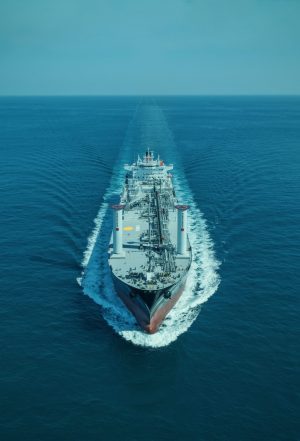
How do they work?
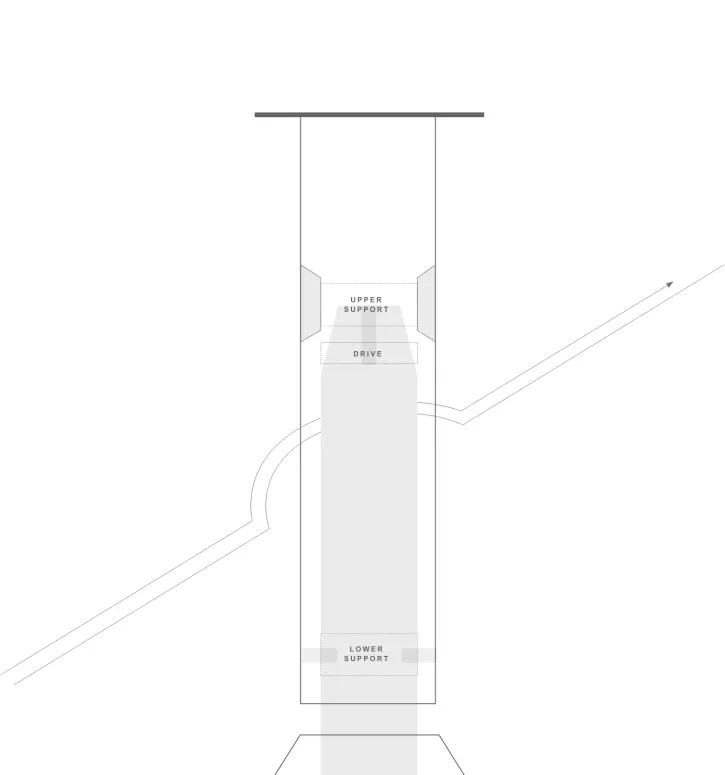
Norsepower Rotor Sail™ – a simple introduction
Norsepower Rotor Sail™ is a cylindrical sail on the ship’s deck. A common misconception is that wind spins the cylinders, but that is not true. Instead, the cylinders are rotated actively, by an electrical motor. The rotating cylinders utilize wind to pack the air behind them. This is done to create pressure difference, which causes a powerful thrust. This allows the main engine to be throttled back, saving fuel and reducing emissions. Or the extra thrust can be used to raise the top speed of the vessel.
The Norsepower Rotor Sail™ is around ten times more efficient than a conventional sail. Due to its simplicity, it requires no reefing or other old-fashioned crew attention when in operation.
It is a push-button wind propulsion solution.
Science behind the product: The Magnus effect
When wind meets the surface of the visible, spinning rotor part of the sail, the air flow accelerates on one side and decelerates on the opposite side of the rotor sail. The change in the speed of air flow results in a pressure difference. This creates a force that is perpendicular to the wind flow direction. The same phenomenon can also be observed for example in golf, tennis, or football, where spinning balls curve in flight.
The optimal number and size of Norsepower Rotor Sails™ on a vessel depends on the size, speed, and operating profile of the vessel. Norsepower Rotor Sails™ are available in five different sizes:
- 20m x 4m
- 24m x 4m
- 28m x 4m
- 30m x 5m
- 35m x 5m
We will help you to find the optimal solution for each project. This can include simulations, feasibility studies and support with the classification. The Norsepower Rotor Sail™ consists of following elements:
- The physical Norsepower Rotor Sails™, which deliver the forward thrust.
- Foundation (with tilting option if needed) that is installed on the deck.
- Norsepower Control™ panel and automation system, which gives the captain full control of the operation and optimises the savings.
- Measurement devices for ambient conditions.
- Norsepower Remote Service Support Agreement can be purchased for around the clock technical support and maintenance.

Technical specifications & options
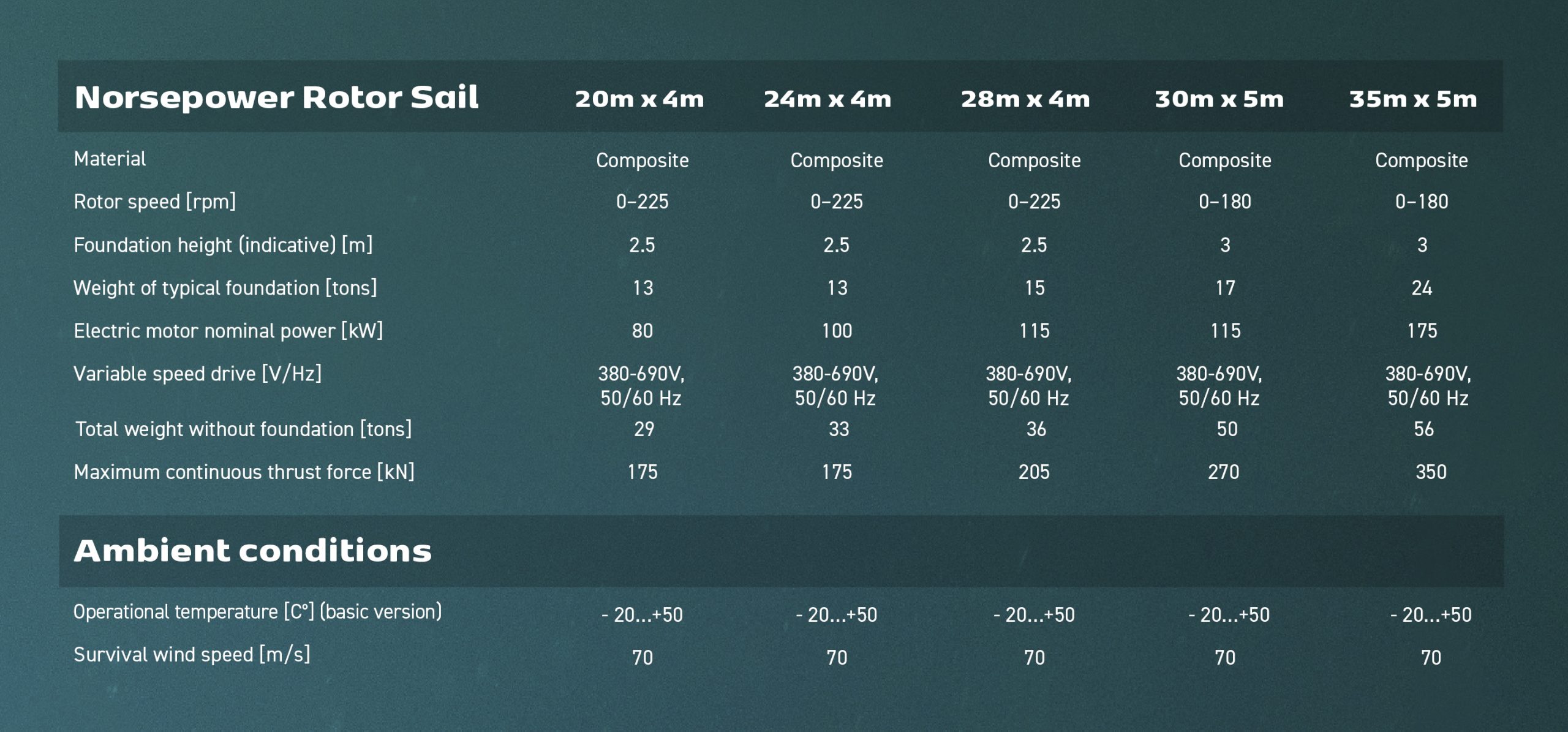
Norsepower Tilting Foundation™
Multiple foundation options are available for customers. The Norsepower Tilting Foundation™, sold from 2020 on, allows the Norsepower Rotor Sail™ to be lowered to a horizontal position when reduced height (air draft) is required. Normally this can be required e.g. when passing below a bridge or during loading operations. The foundations can be integrated to a new build hull or installed during a yard stay as a retrofit. When the foundation installation has been completed, the Norsepower Rotor Sails™ can be lifted on the vessel and attached to the foundations during a regular port call.
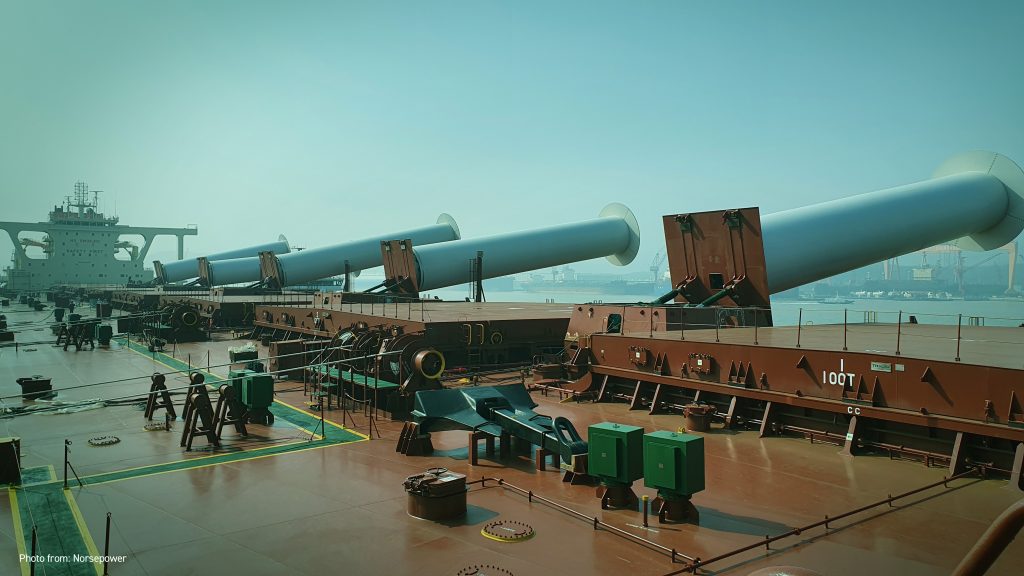
Norsepower Sentient Control™
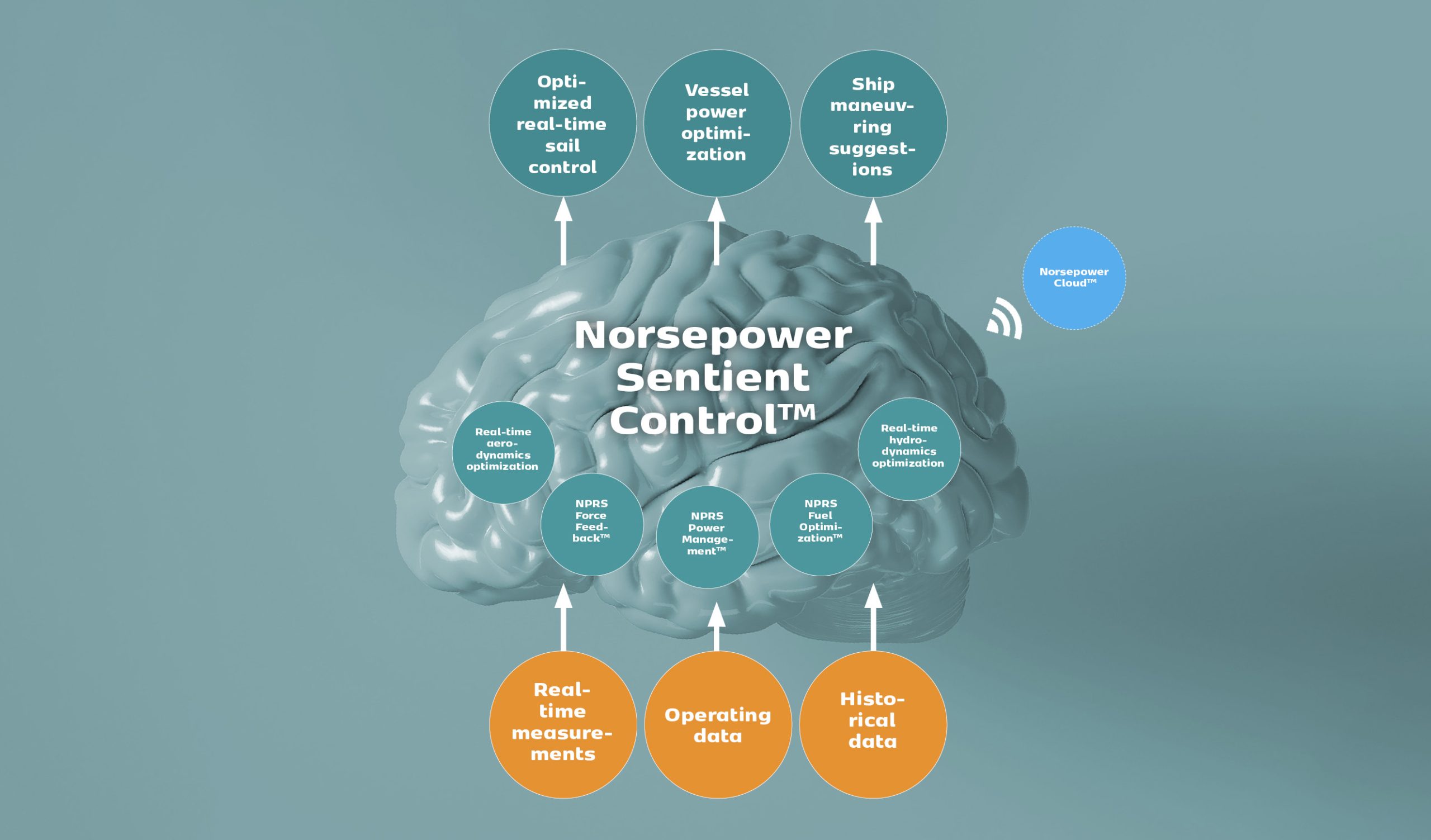
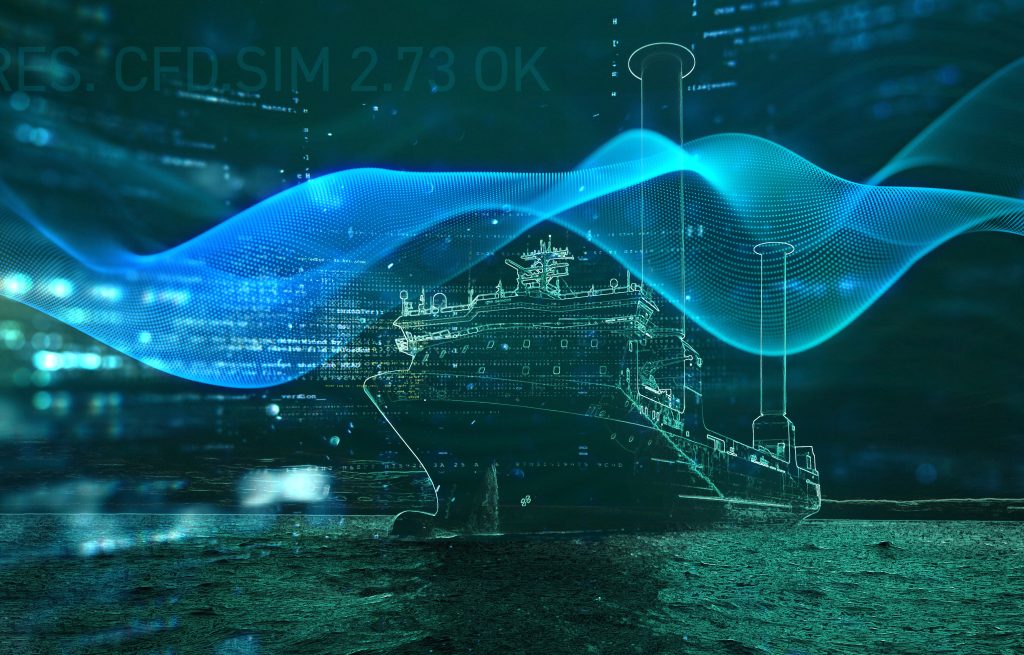
Norsepower Sentient Control™ was launched in 2024. It encompasses all smart control features of Norsepower Rotor Sails™. The software consists of multiple independent modules that enhance overall system performance. These modules account for various physical effects, such as complex aerodynamical interactions between sails, the main engine, and maneuvering.
To achieve maximum sailing performance the system incorporates various physical effects from sail aerodynamics to ship hydrodynamics. The intelligent power distribution of the Norsepower Rotor Sail™ improves the fuel economy by considering the specific fuel oil consumption (SFOC) of the main engine and generator.
Norsepower Sentient Control™ supports a holistic and economical operation of a rotor sailing vessel. It does this by providing sailing and power management advice, also considering the interaction between sails to maximize the overall benefit. The data driven approach of Norsepower Sentient Control™ provides a method for more accurate route optimization. Norsepower can provide a data-based, vessel-specific sailing performance model interface for third-party route optimization. Norsepower Sentient Control™ can improve overall system performance by an additional 10–20%.


